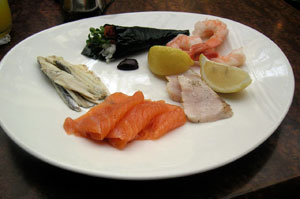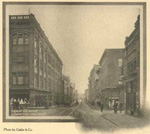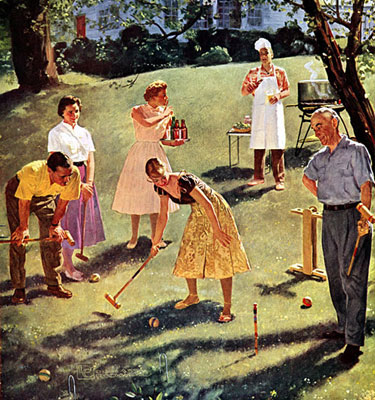 What is it about the holidays that make everyone feel like baking? Is it the change in seasons that triggers a Pavlovian response to stock up on delicious dishes in order to endure the long winter ahead? Or is it simply that because of the temperature change people wear more clothing and can afford to eat a bit more of the foods they love without worrying about exposed midriffs or cellulite?
What is it about the holidays that make everyone feel like baking? Is it the change in seasons that triggers a Pavlovian response to stock up on delicious dishes in order to endure the long winter ahead? Or is it simply that because of the temperature change people wear more clothing and can afford to eat a bit more of the foods they love without worrying about exposed midriffs or cellulite?
This past weekend, dreaming of Pumpkin Crème Pies from the “Tasty Kitchen” section of Ree Drummond’s Pioneer Woman website, I waded with the recipes through the throngs of humanity out shopping, for what I foolishly thought would be a quick trip to the store. What seemed a simple task at hand turned into a nearly day-long ordeal in which I wandered from store to store, leaving each one empty-handed and downtrodden. But motivated by a yearning for the old-fashioned whoopie pies I envisioned, my “food mood” quickly accelerated from a status of moderately hungry and cranky – to completely starving and angry. The problem: the recipe called for a few ingredients that for some reason proved challenging to find with the chief culprits being canned pumpkin (versus pumpkin pie filling), ground ginger and ground cloves.

 It's not about over-abundance, although it sort of is. I'm not the kind of person who loads their plate up full to the brim -- in fact, I don't even like it when my food groups touch, although that's part of it, too, I guess, the fact that you can have multiple plates, like as many as you want.
It's not about over-abundance, although it sort of is. I'm not the kind of person who loads their plate up full to the brim -- in fact, I don't even like it when my food groups touch, although that's part of it, too, I guess, the fact that you can have multiple plates, like as many as you want. My grandfather and several of my great uncles had a fur store in N.Y. It was called Windsor Furs (to indicate, one can only guess, a regal presence previously unknown to 14th Street and 7th Avenue). Uncle Simon and Uncle Harry kept Windsor Furs well into their 90’s. And I would like to tell you all the funny, memorable stories I know about them and the shop. But the thing that springs to mind at this moment is their business card.
My grandfather and several of my great uncles had a fur store in N.Y. It was called Windsor Furs (to indicate, one can only guess, a regal presence previously unknown to 14th Street and 7th Avenue). Uncle Simon and Uncle Harry kept Windsor Furs well into their 90’s. And I would like to tell you all the funny, memorable stories I know about them and the shop. But the thing that springs to mind at this moment is their business card. 
 Ever since I first tried it, bread pudding has become one of my favorite homey desserts. Growing up I never knew it even existed. In my household, old bread was made into breadcrumbs not dessert (blame it on eastern European frugality). If you like French toast then there's no reason you wouldn't like bread pudding—they have similar preparations but with different cooking methods. I actually love it more than French toast, which is hard to say for someone who, as a kid, demanded his mom make French toast for breakfast every Saturday morning.
Ever since I first tried it, bread pudding has become one of my favorite homey desserts. Growing up I never knew it even existed. In my household, old bread was made into breadcrumbs not dessert (blame it on eastern European frugality). If you like French toast then there's no reason you wouldn't like bread pudding—they have similar preparations but with different cooking methods. I actually love it more than French toast, which is hard to say for someone who, as a kid, demanded his mom make French toast for breakfast every Saturday morning.
